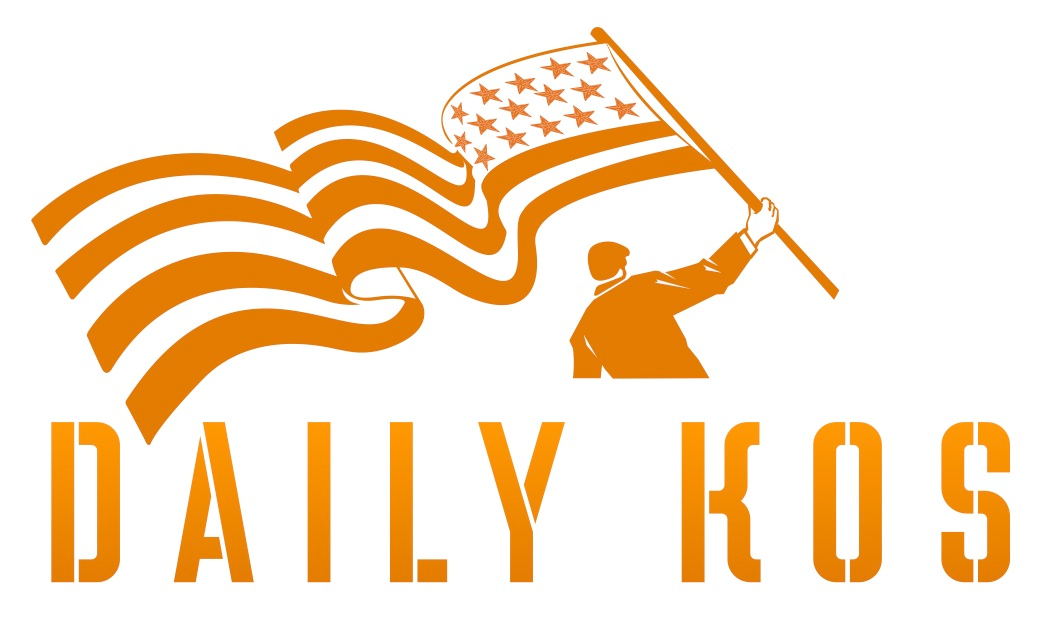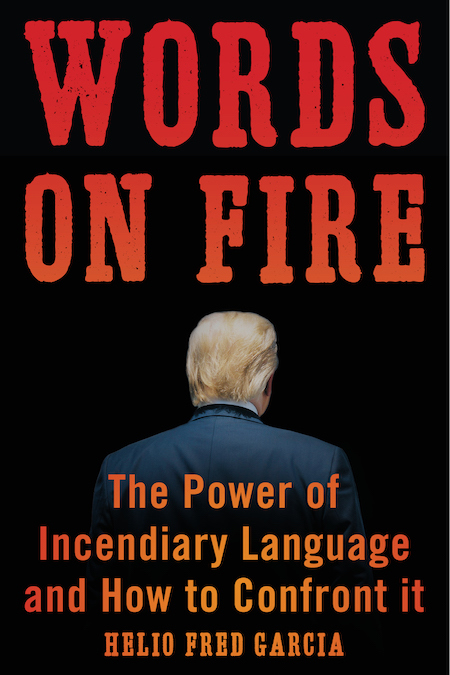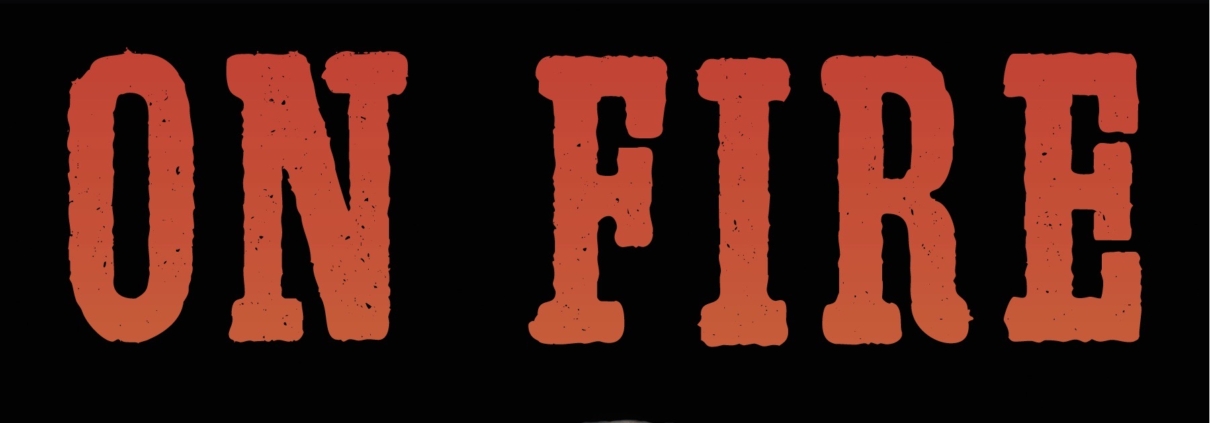GUEST COLUMN: Trump’s Liberate Tweet Puts Lives At Risk
This post was originally published in the Daily Kos, a progressive political opinion site. This guest column was adapted from material in my forthcoming book, Words on Fire: The Power of Incendiary Language and How to Confront it.

Almost exactly a month ago, I raised the alarm about the increase in incivility against Asians and Asian Americans, provoked in part by President Trump’s use of “China Virus” or “Chinese Virus” to describe COVID-19. The FBI has since warned that a wave of hate crimes against people perceived to be Asian or Asian-American is under way.
Now, this incivility has turned towards our healthcare workers and government officials.
It began nearly two weeks ago, as people began protesting outside of government buildings demanding that states reopen. Resentment has been building about stay-at-home orders since early March, encouraged by conservative media and some government officials – including President Trump.
On April 16, Trump announced new guidelines from his administration on how states should lift stay-in-place orders to restart the economy, titled “Opening Up America Again.”
“Based on the latest data, our team of experts now agrees that we can begin the next front in our war, which we’re calling, “Opening Up America Again.” And that’s what we’re doing: We’re opening up our country. And we have to do that. America wants to be open, and Americans want to be open. As I have said for some time now, a national shutdown is not a sustainable long-term solution. To preserve the health of our citizens, we must also preserve the health and functioning of our economy.”
The guidelines outline a phased process that governors would lead based on their specific circumstances. This came days after Trump claimed he had “ultimate authority” to reopen states, as governors across the east and west coasts vowed to not reopen their states until the pandemic subsides.
Incendiary Tweets
The next day, Trump flipped his script. Several small protests had popped up across the country against the stay-at-home orders. That morning, Fox News aired a segment about a group called “Liberate Minnesota,” which planned to protest the state’s stay-at-home order outside of the governor’s house.
Minutes later, Trump tweeted,
“LIBERATE MINNESOTA!” followed by “LIBERATE MICHIGAN!” and “LIBERATE VIRGINA, and save your great 2nd amendment. It is under siege!”
This apparent endorsement of the protests, in direct violation of public health guidelines issued by Trump’s own administration, was seen by some as a signal. Far-right extremists believed Trump’s tweets were a call for armed conflict, an event referred to as “the boogaloo.” The term “Boogaloo,” shorthand for “Civil War 2: Electric Boogaloo,” had been documented in February of this year as a new and growing movement of far-right extremists calling for a new Civil War. Hours after the president’s “Liberate” tweets, more than 1,000 tweets were posted using the term “Boogaloo.”
And, in fact, the 2nd Amendment was not under attack by any governmental or political leader. But protesters took the cue and began showing up in public heavily armed, including with semi-automatic assault weapons.
Washington State Governor Jay Inslee immediately recognized the threat posed by Trump’s tweets:
“The president’s statements this morning encourage illegal and dangerous acts. He is putting millions of people in danger of contracting COVID-19. His unhinged rantings and calls for people to “liberate” states could also lead to violence. We’ve seen it before.”
Inslee continued:
“The president is fomenting domestic rebellion and spreading lies even while his own administration says the virus is real and is deadly, and that we have a long way to go before restrictions can be lifted.”
Over the next several days, anti-lockdown protests spread across the country, with large crowds gathering outside of government buildings and governors’ homes, many without wearing masks and bearing homemade signs such as “COVID-19 is a lie” and “Social distancing = communism.” Many protestors wore MAGA hats. Some protestors carried weapons, flew Nazi and confederate flags, and shouted phrases typically heard during Trump rallies.
Attacking Healthcare Heroes
And then the vitriol turned to healthcare workers. As the anti-lockdown protests continued, healthcare workers began counter-protesting on their days off across the country, appearing in scrubs and masks in defiance of those claiming the virus isn’t real. Anti-lockdown protestors began harassing these healthcare workers, shouting insults like “shame”, “traitors”, and “fake nurses.”
Lauren Leander, an ICU nurse in Arizona, described her interactions with protestors as she and her colleagues stood silently in scrubs and masks at an anti-quarantine protest in Phoenix:
“It was heated, people were very fired up about what they had to say… A lot of the top comments we got were about us being fake nurses, there was a huge majority of them that still believe this virus is fake, that it’s a hoax and not real at all. They were convinced that we’re fake nurses and that’s why we weren’t talking.”
Even politicians have propagated this language, questioning the legitimacy of the health workers. Who were counter-protesting. Former Arizona state senator, Dr. Kelli Ward, tweeted on April 21,
“EVEN IF these “spontaneously” appearing ppl at protests against govt overreach (sporting the same outfits, postures, & facial expressions) ARE involved in healthcare – when they appeared at rallies, they were actors playing parts. #Propaganda #FakeOutrage”.
Meanwhile, Trump continued passively supporting the protests.
Deflecting Responsibility

In Words on Fire I document a pattern Trump uses when asked to denounce people who commit or threaten violence in the wake of Trump’s rhetoric. Trump’s response typically includes some or all the four elements below.
Deflect. He does this in several ways. He ignores the call to denounce. He changes the subject. He professes ignorance about the event. He characterizes the event differently. Sometimes he expresses sympathy for victims while not addressing the event that caused them to be become victims.
Diminish. If pressed he diminishes the significance of the event or attempts to create equivalence between the event and more benign topics.
Denounce. After an interval, sometimes of hours, but often of days, Trump issues a written denunciation or reads a statement denouncing the event or person, often in a tone of rote recitation.
Revert. Not long after the denunciation, Trump reverts to his earlier language and behavior, as if his denunciation never happened. This is a constant; it happens after every denunciation.
On April 20, President Trump was asked specifically about whether he was worried that his words may incite violence. It led to this exchange:
Q You know, these — you referred to these protests earlier. You know, some of them are getting pretty intense and were actually getting some death threats to some governors who are reluctant to reopen.
He went to Step 1, Deflect:
THE PRESIDENT: You are, in the media?
Q No, the governors are getting death threats. You know, governors of Kentucky, Michigan, Virginia. They’re getting increased level of death threats. And are you concerned that your talk about liberation and the Second Amendment and all this stuff —
THE PRESIDENT: No. No, no.
Q — are you inciting violence among a few people who are (inaudible)?
THE PRESIDENT: I’ve seen the people. I’ve seen interviews of the people. These are great people. Look, they want to get — they call it “cabin fever.” You’ve heard the term. They’ve got cabin fever. They want to get back. They want their life back. Their life was taken away from them…
Q Are worried about violence though? I mean, some of them (inaudible) threats at them.
He then went to Step 2: Diminish:
THE PRESIDENT: I am not. No, I’m not. I think these people are — I’ve never seen so many American flags. I mean, I’m seeing the same thing that you’re seeing. I don’t see it any differently.
Q There are Nazi flags out there too.
THE PRESIDENT: They are who?
Q Nazis flags.
THE PRESIDENT: Well, that I totally would say, “No way.” But I’ve seen — I didn’t see that. I see all — of course, I’m sure the news plays that up. I’ve seen American flags all over the place. I have never seen so many American flags at a rally as I have at these rallies. These people love our country. They want to get back to work.
He has yet to denounce the protestors, despite the fact that the majority of Americans are more concerned about states reopening too quickly than restarting the economy. Why is that?
Toxic Spokesman
Trump has played to this base before, since the very beginning of his first presidential campaign. He has frequently used language recognized by white supremacists and white nationalists.
And although Trump may not directly share their views, we know he is not averse to working with people who share the ideology of the protestors.
And he surrounds himself with people who are similarly-disposed.
On April 23, reports came out the Trump’s newly appointed Assistant Secretary for Public Affairs at the Department of Health and Human Services, Michael Caputo, had deleted more than a thousand tweets, including tweets from March that included racists and derogatory comments about Chinese people, the very rhetoric that caused the wave of hate crimes the FBI warned about.
Caputo’s tweets also claimed that Democrats were rooting for the virus to kill thousands of people, and conspiracy theories about how the virus was a hoax to hurt Trump.
This man will now be the chief spokesman for America’s healthcare infrastructure.
***
We’ve seen the effects of Trump’s incendiary rhetoric before. We know the predictable consequences of that rhetoric. If Trump continues to use language that encourages people to violence, eventually someone will answer his call.




Leave a Reply
Want to join the discussion?Feel free to contribute!